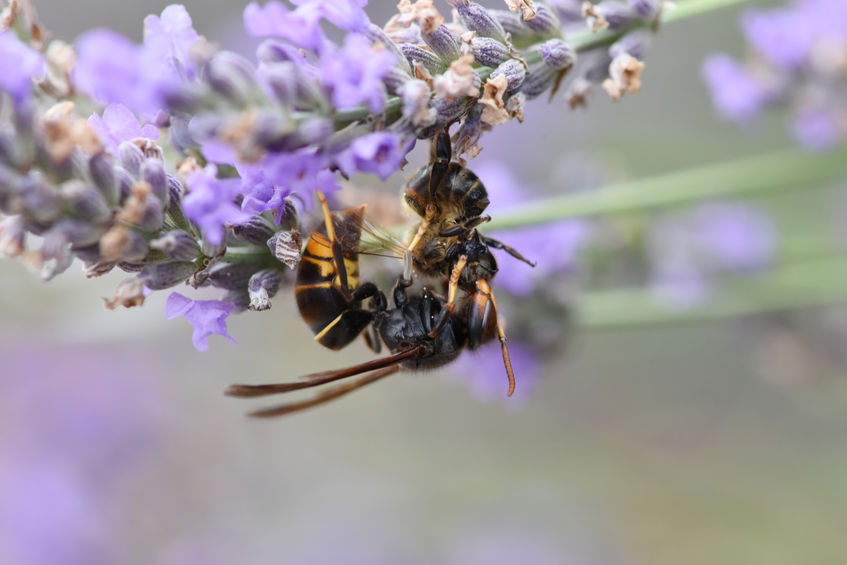
Farmers have been told to be on the look out for Asian Hornets after a person was stung by the aggressive insect in Jersey which is thought to be the UK's first such case.
A maintenance worker at Sun Bowls Club in Jersey disturbed a nest of Asian Hornets while trimming a hedge and was stung.
As the maintenance worker is allergic to wasp stings he was taken to hospital for treatment.
An investigation of the area found the nest close to where he was working. A pest control officer has attended and will arrange to destroy the nest, which can take 48 hours to be destroyed.
The incident follows news of a French farming dying after he was stung by an Asian hornet.
Patrick Dupont, from the town of Douai in northern France, suffered an anaphylactic shock after the sting.
The farmer was driving home after a walk when he lost consciousness at the wheel and crashed into a lamp post.
A neighbour who witnessed the accident noticed Mr Dupont's leg was swollen and a hornet inside the car.
'Public safety'
The species arrived in France in 2004 and is now common across large areas of Europe.
It was discovered for the first time in the British Isles in Jersey, Alderney and Gloucestershire in 2016.
Jersey's Department of the Environment has now warned farmers to look out for the species, which pose a risk to native honey bees.
Dr Tim du Feu, director of environmental protection at Jersey's Department of the Environment said: "The island's Asian hornet numbers have increased considerably this year, and the concern is for public safety.”
Asian Hornets can be confused with their larger native European hornet counterparts; the Asian Hornet abdomen is almost entirely dark while the European Hornet’s abdomen is largely yellow.
The department said nests can be in roof spaces of houses, sheds, in trees, hedges and on the ground in brambles. Nests can also fall out of trees during high winds.
